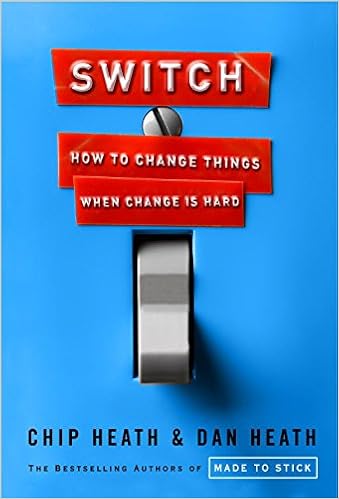A few weeks ago I read Switch: How to Change Things When Change Is Hard by Chip and Dan Heath. I was a big fan of Made to Stick so was motivated to read this book.
On the face of it, the content reminded me a lot of the book Influencer by Joseph Grenny as the six sources of influence covered in that book can be found in different places in Switch. Switch has a more narrative approach and in someways is more simple and memorable in my opinion.

That dominant metaphor used is that of a rider directing an elephant on a path. The rider represents the rational mind, the cognitive aspect of a person. The elephant is the emotionally driven part of a person that supplies the motivation and energy. The path is the context and circumstances that impact the degree to which new behavior is easy or difficult.
As they dive deeper into the book, they include the broader categories that are found in the six sources of influence. So individual and corporate motivation, ability, and structure are represented as they unpack the elephant metaphor.
In short – their conclusions are that some people problems are not people problems, but situation problems. That behavior can change when different key variables are changed that impact behavior.
One of the most interesting aspects of the book deals with motivation and the conclusion was from research that will power or that type of motivation for change is an exhaustible resource. Or to put it succinctly, self-control is an exhaustible resource. Meaning you can only say no a certain number of times before you will give in unless you have time to replenish that capacity. It’s why people are more prone to various temptations when they are tired or after they have had to engage in rigorous decision making for a time. Another book I’m reading calling the The Honest Truth about Dishonesty by Dan Arielly had an appendix that affirmed this very thing.
All this to say – there is a lot behind why people do or do not do things. To lead people or even to lead ourselves, it is helpful to understand what things make the difference in helping the most number of people, or ourselves, get to the behavior that’s desired or needed. This is critical, not so we can manipulate, but so we can mature and serve others and communities or teams move towards maturity and healthy behavior. So there’s a lot of application – from planning, to organizational leadership, to ministry, leadership development, education, training, and yes – parenting!
